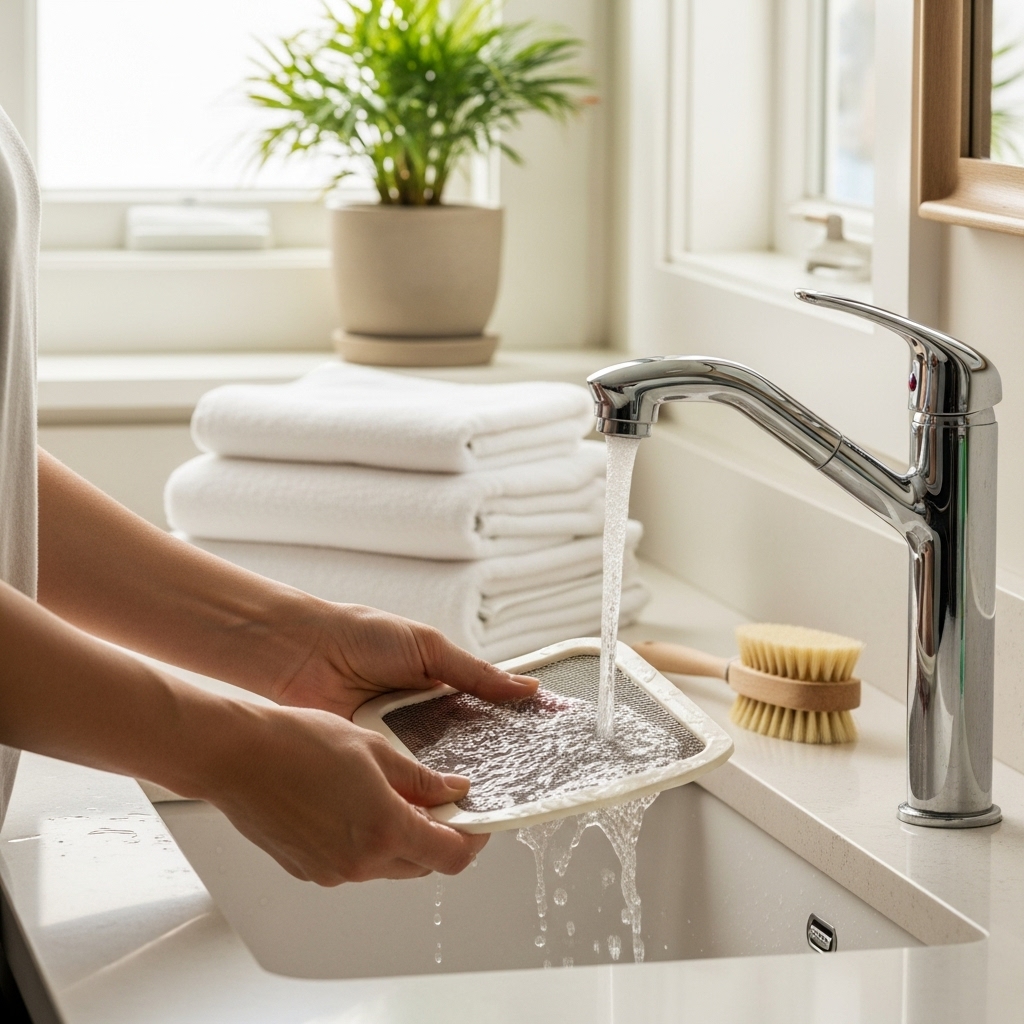Dryer vent cleaning tips matter for every household, but homes in Malibu, California face special conditions that make maintenance especially important. Coastal humidity, salt air, canyon winds, and varied elevations challenge vent systems, leading to faster lint accumulation and more frequent damper issues at exterior hoods. With a thoughtful plan, you can keep airflow strong, avoid unnecessary appliance strain, and support a safer home. The guidance below highlights practical steps, smart upgrades, and local considerations for Malibu residents, along with when to call in professional dryer vent cleaning help for comprehensive results.
Start With the Basics: Daily and Weekly Habits
Simple habits provide the most consistent benefits. Clean the lint screen after every load; it is the easiest way to maintain airflow. Every few weeks, rinse the screen with warm water to remove residues from dryer sheets or fabric softeners that can reduce air passage. Avoid overloading the dryer; compressed fabrics trap moisture and shed more fibers, lengthening cycles and adding to lint volume. If you launder pet bedding, plan for extra maintenance because hair and dander increase buildup inside the duct.
Keeping the laundry area tidy matters, too. Vacuum around and behind the dryer to minimize dust that can be pulled toward the intake. Ensure the dryer is positioned so the transition connector is not crushed when you push the appliance back. If space is tight, consider an offset elbow or recessed box to create room for a smooth, kink-free connection.
Know Your Vent Path
Understanding your vent route helps you make smarter maintenance decisions. Trace the path from the dryer to the wall connection and then to the exterior termination. Note whether the exit is on a wall or rooftop, how many turns are in the duct, and where elbows may be hiding in attics or crawlspaces. Malibu’s hillside homes often include vertical rises that add resistance, while oceanfront residences may place the exit close to salt-heavy air that can corrode dampers over time.
Write down your vent’s approximate length and any access limitations. This information will help you talk with a professional and set an appropriate cleaning frequency. If your home has a guest suite or rental unit with a separate dryer, evaluate those runs as well—frequent use and varied user habits increase lint production.
Exterior Hood Care
The exterior termination is where indoor moisture and heat exit your home. Inspect it regularly. During a drying cycle, the damper should open fully and you should feel strong, warm exhaust air. If the damper sticks, flutters, or opens weakly, the duct may be restricted or the hood may be corroded or painted shut. Gently remove visible lint around the hood and verify free movement of the damper. Avoid screens that trap fibers and impede airflow.
In Malibu’s coastal environment, hardware can corrode faster than expected. Consider materials and finishes that resist salt exposure. If you see rust or stiff movement, plan a professional visit to clean the duct and evaluate whether an upgraded hood would help maintain reliable airflow.
Safety-First Materials and Connections
Use smooth metal ducts for the main vent pathway. For the short connection between the dryer and wall, semi-rigid metal transitions perform better than thin foil or plastic options, which can collapse or overheat. Secure connections with proper clamps or metal foil tape rated for ductwork rather than screws that protrude into the duct interior and snag lint.
After cleaning or moving your dryer, confirm that the transition connector remains round and kink-free. A crushed connector becomes a hidden choke point, reducing exhaust velocity and encouraging lint to settle. Make a habit of checking the connection after you push the dryer back into place.
Smart Upgrades for Malibu Homes
Minor improvements can significantly enhance performance. If your termination hood is old, consider a modern damper design with smooth interiors and corrosion-resistant materials. Replace flimsy connectors with semi-rigid transitions sized correctly for your dryer outlet and wall collar. Where your vent takes multiple turns, review whether any elbows can be reduced or rearranged during renovations to shorten the route and improve airflow.
Booster fans are sometimes proposed for very long runs, but they should only be installed when justified and configured to meet code and manufacturer guidance. Discuss this option with a professional who can evaluate your entire system and determine whether a booster is truly needed or whether routing changes would deliver a better outcome.
When to Call a Professional
Some maintenance is best handled by experts with purpose-built tools. If drying cycles lengthen despite clean lint screens, if you smell scorching odors, or if the exterior damper does not open fully during a cycle, schedule a professional inspection. This is especially important for rooftop terminations or long attic runs common in Malibu. Technicians will use rotary brushes and negative-pressure vacuums to remove compacted lint throughout the entire duct, then clean and verify the termination hood.
Beyond cleaning, professionals document the vent path, provide before-and-after photos when possible, and recommend practical upgrades. They also test airflow to confirm the duct is clear and the system performs as expected. When booking, ask whether they are trained for roof safety and familiar with corrosion issues common to coastal homes. Comprehensive dryer vent cleaning produces measurable results—shorter cycles, a cooler laundry room, and stronger exhaust at the exterior.
Seasonal Considerations in Malibu
Seasonal shifts affect vent performance. During periods of heavy marine layer, humidity can amplify lint’s tendency to clump, making removal more important. Canyon winds may cause exterior dampers to behave erratically; a well-fitted hood with a smooth-moving damper helps maintain stability. After windy, dusty days or wildfire smoke events, check exterior hoods for debris and confirm free movement.
Vacation rental season brings frequent laundry loads. If you manage guest stays, plan a cleaning schedule that accounts for higher usage, including bulky linens and towels that shed fibers quickly. Coordinating service for multiple laundry areas—main house and guest suite—avoids bottlenecks and keeps your property running smoothly.
DIY Steps You Can Safely Perform
With the dryer unplugged and, for gas units, the gas supply off, you can gently vacuum the lint trap housing using a narrow attachment. Carefully pull the dryer away from the wall to vacuum dust underneath and around it. If you can access the short transition connection, verify it is not crushed and that clamps are snug. Avoid pushing rods or makeshift brushes deeply into the duct; without the correct tools and vacuum capture, debris can be compacted or left behind, and thin ducts can be damaged.
During a drying cycle, step outside to check airflow and damper action. Inside, notice whether the laundry room feels excessively warm or humid. These simple observations provide early clues that a professional visit is due.
Common Pitfalls to Avoid
Several well-meaning shortcuts create bigger problems. Do not install screens at the termination point; they catch lint and restrict air. Avoid screws in the duct interior that act as lint hooks. Skip overly long, flexible connectors that sag or kink; they accumulate debris faster. Be cautious of pushing the dryer tightly against the wall after cleaning—give the transition connector the space it needs to maintain a smooth curve.
Also resist the urge to rely on a clean lint screen as proof that the system is clear. The screen captures a portion of lint, but significant fibers bypass it and accumulate in the duct, especially along elbows and ridges. Only a full-duct cleaning verifies the system is truly clear.
Troubleshooting Slower Drying Times
If your dryer suddenly takes longer, isolate variables. First, clean the lint screen and test a small load of lightweight items. If drying remains slow, check the exterior hood during a cycle; weak damper movement suggests an airflow restriction. Verify that the transition connection behind the dryer is not crushed. If these quick checks do not resolve the slowdown, schedule a professional inspection to identify blockages, nesting materials, or termination issues.
Consider the type of laundry you are running. Bulky bedding and towels naturally take longer to dry and shed more fibers. Plan to run fewer bulky items at a time and clean the lint screen midway through the cycle if necessary.
Frequently Asked Questions
Q: How often should Malibu homeowners schedule a professional visit? A: Many benefit from annual service, while high-use households or rental properties may need more frequent appointments. Track drying times and exterior damper behavior to fine-tune your schedule.
Q: What materials are best for the vent? A: Smooth metal for the main duct and semi-rigid metal for the transition connection are preferred. Avoid plastic and thin foil hoses.
Q: Is rooftop access a problem for cleaning? A: Experienced technicians routinely service rooftop terminations using proper ladders and safety equipment. They will inspect the hood for corrosion and ensure the damper moves freely.
Q: Can I clean the vent myself? A: Handle light maintenance—lint screen cleaning, vacuuming the lint trap housing, and checking the exterior hood—but leave full duct cleaning to professionals with the correct tools and vacuum systems.
Q: Do dryer sheets affect airflow? A: Residues can coat the lint screen, reducing air passage. Rinse the screen periodically with warm water to maintain performance.
Put These Tips to Work in Malibu
By combining daily habits with periodic professional service, you can keep your Malibu home’s vent system clear and efficient. Understand your vent path, choose durable materials, inspect the termination hood, and respond quickly to early warning signs. When you are ready to see measurable improvements—shorter cycles, cooler laundry rooms, and stronger exterior airflow—schedule thorough dryer vent cleaning with a provider who understands Malibu’s unique coastal and hillside conditions.
Make Laundry Safer and Faster Starting Today
Whether your home sits on the sand or high in the canyons, consistent maintenance pays off in comfort and peace of mind. If you want expert guidance, a clear vent path, and dependable performance from your dryer, book professional dryer vent cleaning and enjoy the difference careful, locally informed service can make.

